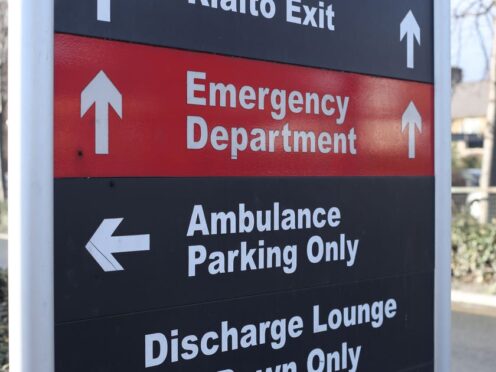More than 1,300 children were admitted to hospital in Scotland with severe injuries between 2018 and 2023, a report has found.
The study, by the Scottish Trauma Audit Group (STAG), found almost half of all major injuries to children were caused by moving vehicles, most often when the child was either on foot or riding a bike.
Moving vehicles were the most frequent cause of injury in the last four years in the study, and accounted for almost a third of all severely injured children.
The next most common cause of injury was falls, either from height or from the same level, followed by “contact” with either people, objects or animals, and boys suffered twice as many injuries as girls overall.
In the preface to the report, Dr Stephen Bridgman, Public Health Scotland’s clinical lead for injury, said: “Injury is one of the most important causes of death and ill health in children and young people, and consequently is a priority area.
“Injury of a child can be devastating for the family and friends of the child, as well as the child themselves.
“This report, based on high-quality data collected as part of the Scottish National Audit Programme, Public Health Scotland shows that, shockingly, 1,326 children under 16 were admitted to hospital in Scotland between 2018 and 2023 following severe injury that met the inclusion criteria for the audit.

“With approaching an average of one child a day being severely injured in Scotland and included in the STAG database, and three children a year who reach hospital alive and then tragically die, there is clearly the moral need to prioritise the prevention of childhood injury, in addition to the new statutory need.
“While the data presented here are primarily captured to support better care of the injured, it provides valuable insights to help us guide where more preventative work is needed.”
The study, which is the first comprehensive analysis of severe injury data for under-16s in Scotland, found that of the 1,326 patients studied, 274 (21%) were categorised as having suffered major trauma and 861 (65%) as having moderate trauma, with the rest sustaining minor trauma.
The report found 99% of children survived after suffering a severe injury.
It makes a number of recommendations, including around the ongoing collection, analysis and publication of injury data, and further research on the causes of injuries to young people in order to support injury prevention.
STAG’s aim is to improve the quality of care, patient experience, and outcomes of severely injured patients through measuring compliance against key performance indicators to support local quality improvement.
To be included in STAG, an injured patient has to be in hospital for at least three days, be admitted to critical care or die in hospital.
